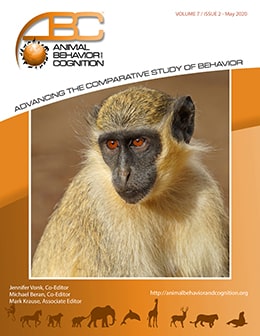Vol 7, Issue 2, May 2020
How Environment Can Reveal Semantic Capacities in Nonhuman Animals
Citation
Lyn, H., & Christopher, J. L. (2020). How environment can reveal semantic capacities in nonhuman animals. Animal Behavior and Cognition, 7(2), 159-167. doi: https://doi.org/10.26451/abc.07.02.10.2020
Abstract
Seyfarth, Cheney, and Marler (1980) were the first researchers to delineate a nonhuman animal communication system that seemed to include linguistic reference (signals with specific meanings). Arguments continue, however, over the use of linguistic terms as well as the specific nature of those calls. Frequently dismissed or ignored in the discussion of the usefulness of animal communication to the study of human language evolution is the wealth of data from the language research projects that show remarkable levels of symbolic behavior in animals reared in enriched, enculturated environments. These data show that the capacity for semantic communication systems is not unique to humans. Discussions surrounding semanticity and human language evolution would therefore benefit by switching focus to the environmental factors that support the expression of biologically extant semantic capacities.
Keywords
Symbolic, Ape language research, Evolution of language, Semanticity
